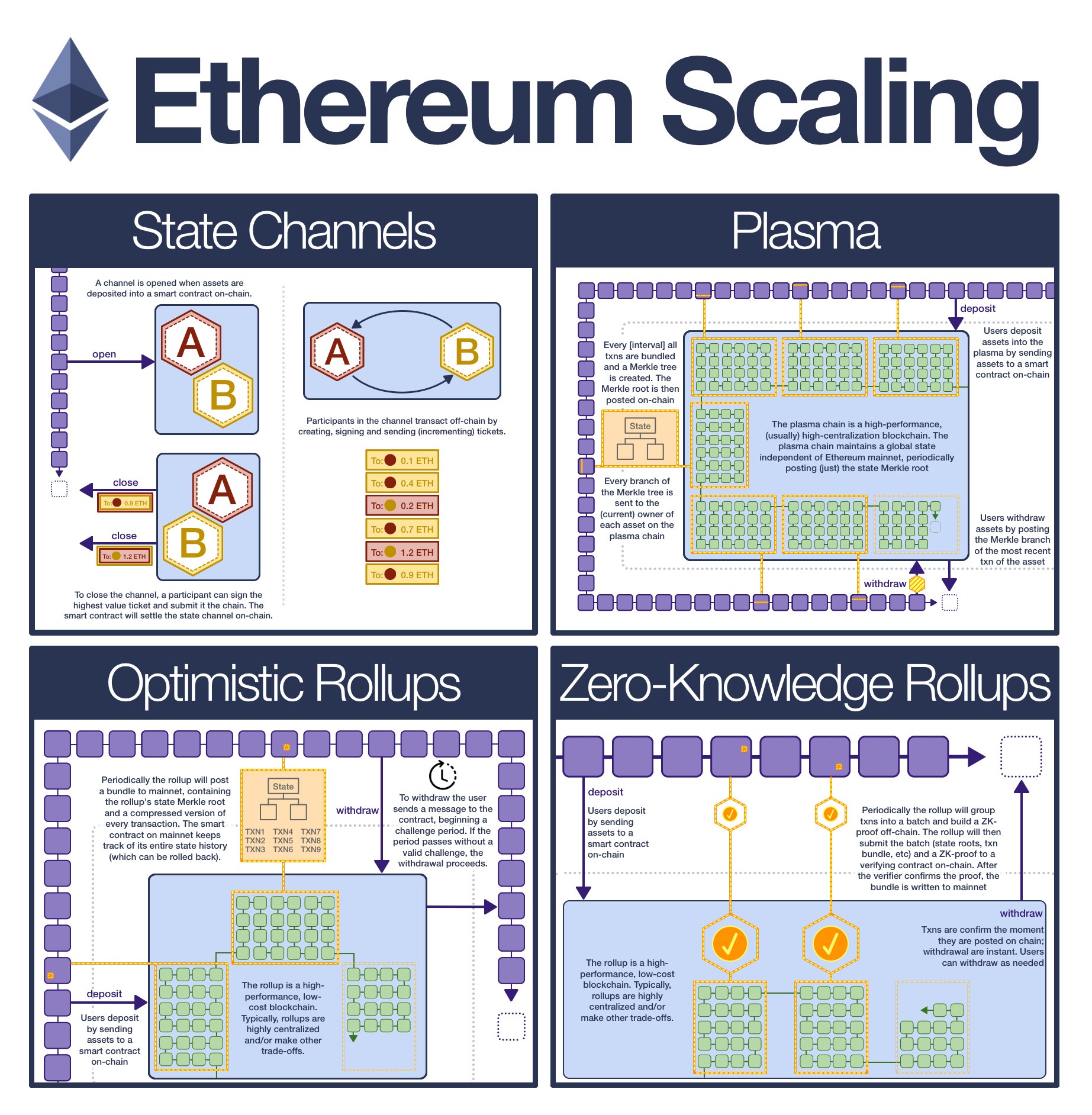
¶ Scaling Execution
¶ Prerequisites
¶ Gas
Gas measures the amount of computational effort required to execute specific operations on Ethereum.
¶ Settlement
Settlement is the "final step in the transfer of ownership, involving the physical exchange of securities or payment".
After settlement, the obligations of all the parties have been discharged and the transaction is considered complete.
¶ The World Computer
Bitcoin is the suggestion that trustless computing was possible; Ethereum, the World Computer, is the delivery.
The World Computer is slow, intentionally.
That slowness manifests in two ways: sluggish execution and high gas costs.
Which brings us to the framework that defines Ethereum scaling: keep as much execution off-chain as possible while still ultimately settling to Ethereum.
If the transaction settles on Ethereum, then it gains all the properties of Ethereum.
¶ State Channels
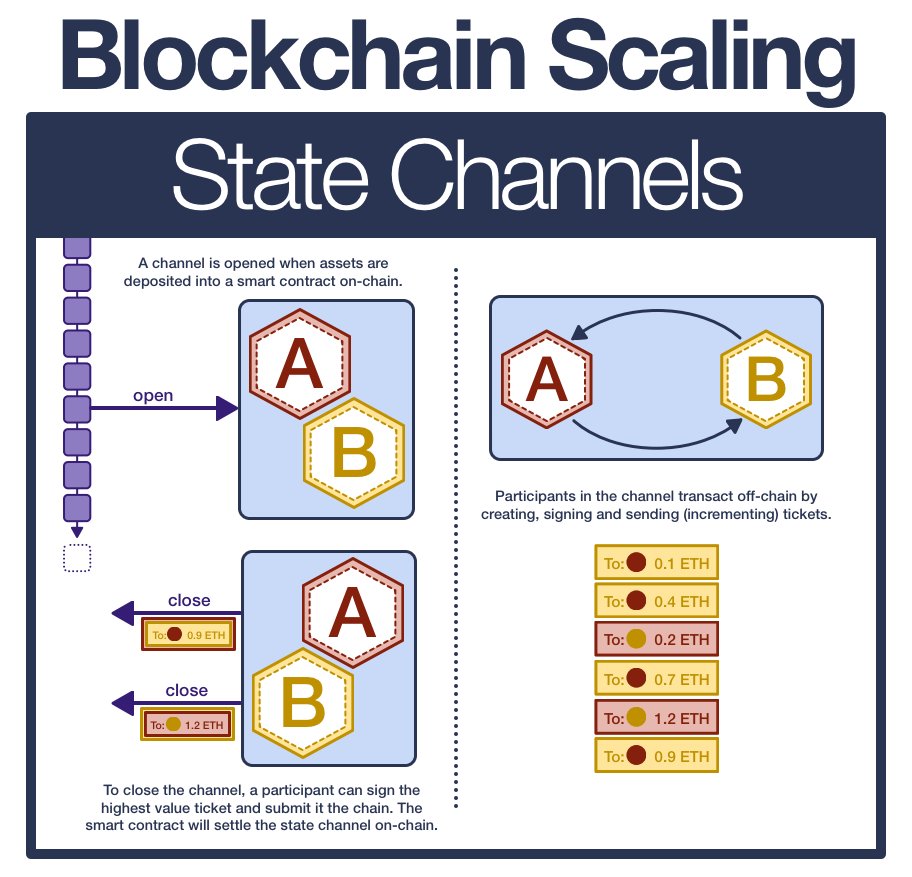
State channels are the first attempt at moving execution off-chain.
Channels are one-time relationships between two or more parties. The parties lock up capital on-chain, allowing them to exchange IOUs for no cost.
While this technique is powerful, there are limits to what state channels can do:
- cannot send funds off-chain to people who are not yet participants
- cannot represent objects without an explicit owner (eg Uniswap)
- requires large amount of value to be locked
¶ Plasma
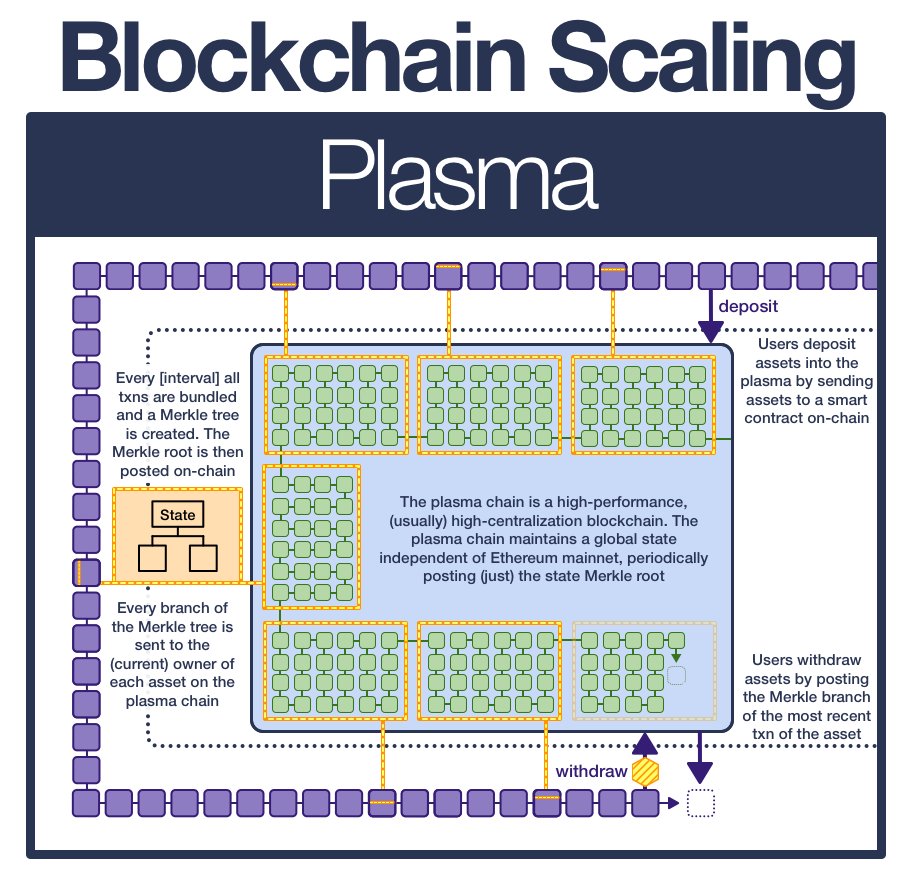
Plasma (chains) were developed to address (some of) these issues.
Plasma are independent blockchains that are much higher performance (and much more centralized) than Ethereum.
However, they are anchored to the World Computer by posting data back to mainnet.
Plasma offers huge improvements over state channels:
- can send assets to users who haven't opted-in yet
- supports a persistent state (exists even when users exit the system)
- data is posted on-chain periodically
But, plasma is only half the solution.
¶ Rollups
The full solution: rollups!
Where plasma only posted the state root (a single line used to verify if a txn happened), rollups post everything you would need to fully reconstruct the chain.
Imagine an entire blockchain that's squeezed into the main Ethereum blockchain.
¶ Optimistic Rollups
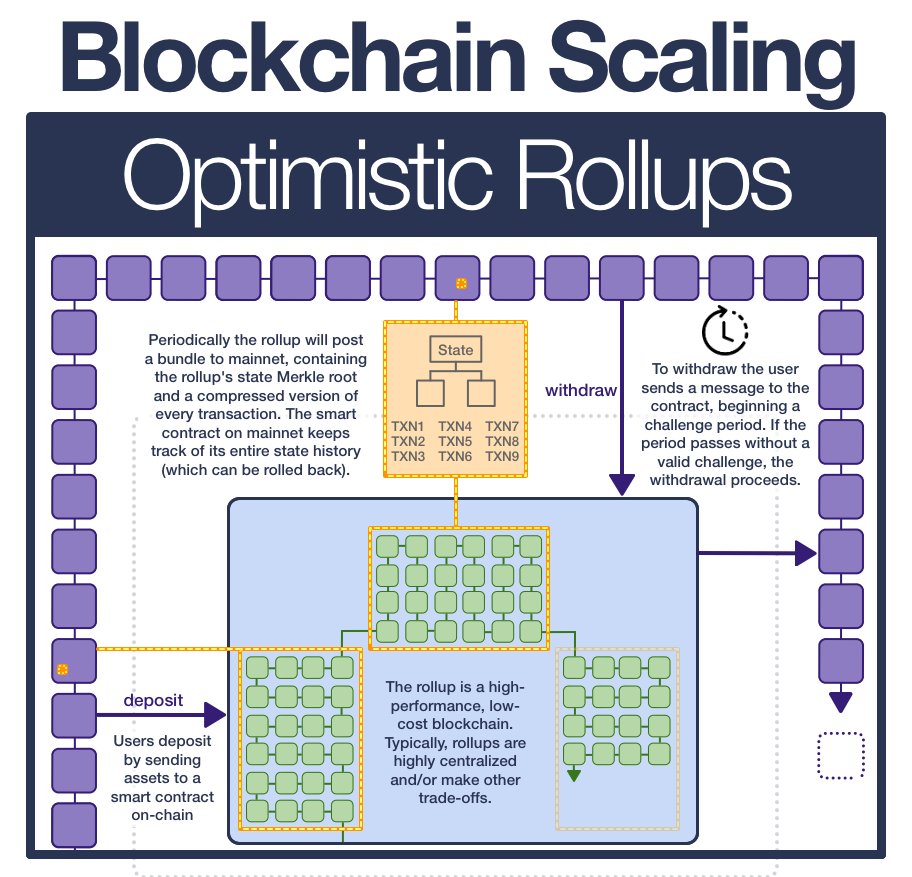
The first category of rollups are optimistic rollups.
Optimistic rollups make the assumption that all txns that are posted to mainnet are valid and so it records them on-chain.
But, just in case, they also leave open a challenge window.
The rollup creates its own blockchain, which anyone can watch for fraud.
When detected, they can publish a fraud proof, proving the batch is invalid and should be reverted.
The result: no txn is finalized until the challenge period (up to 7 days) has passed.
¶ ZK-Rollups
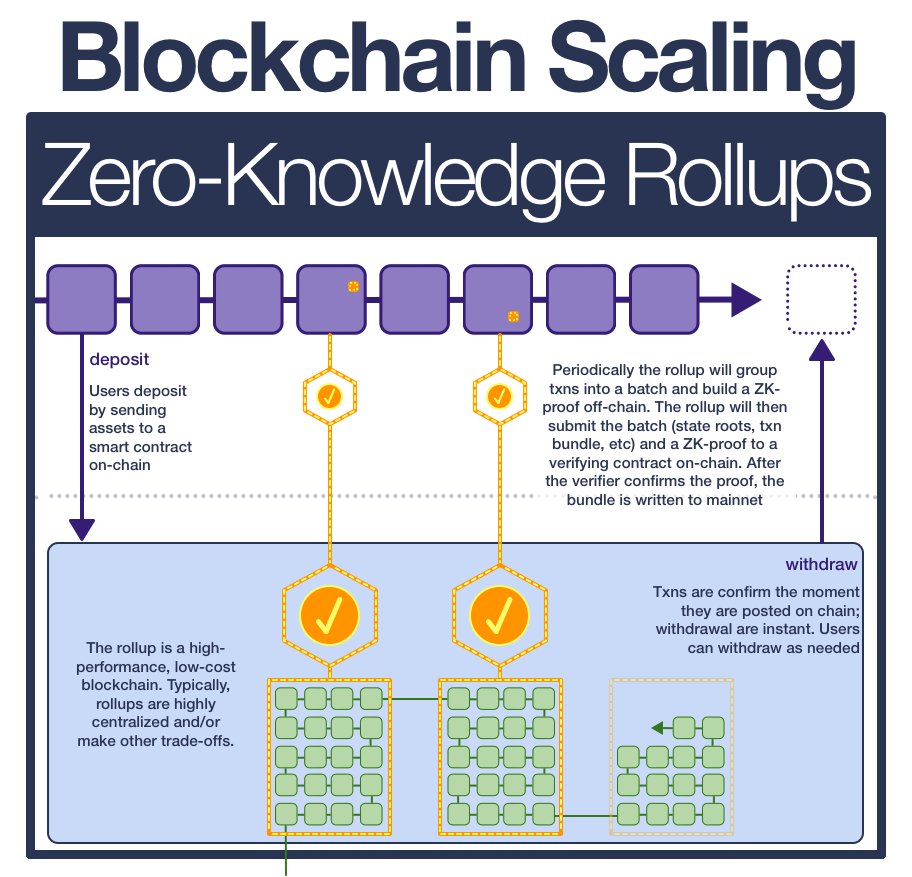
Which brings us to the real solution to blockchain scaling and the future of EEthereum: ZK-Rollups.
Like their optimistic brothers, ZK-rollups post ALL data to mainnet, but they also provide a a zero-knowledge proof.
The ZK-proof represents mathematically certainty that whatever is posted on-chain was both valid and actually happened on the rollup. If the proof verifies, the transaction is final both on the rollup and onEthereum.
All the benefits of rollups with instant settlement.
ZK-Rollups are still the bleeding edge of blockchain technology; (I believe) there isn't a single general purpose/EVM-compatible ZK-Rollup ready for production... today.
But we are not far away, if you look carefully you'll find a testnet or two.
¶ The World Super-Computer
Back in November 2021, the founders of Starkware were on the Bankless podcast.. Uri mentioned that StarkNet was already fast and cheap enough to protein folding simulations.
We are building a legit supercomputer!
When you look at Ethereum today, it might be hard to see the World Computer.
Even if you wrap your head around the metaphor, it's hard to see how 12 txns/sec is going to support the whole world.
But I'm not looking at today, I'm looking at a zero-knowledge future.
¶ Resources
Source Material - Twitter Link
Source Material - PDF